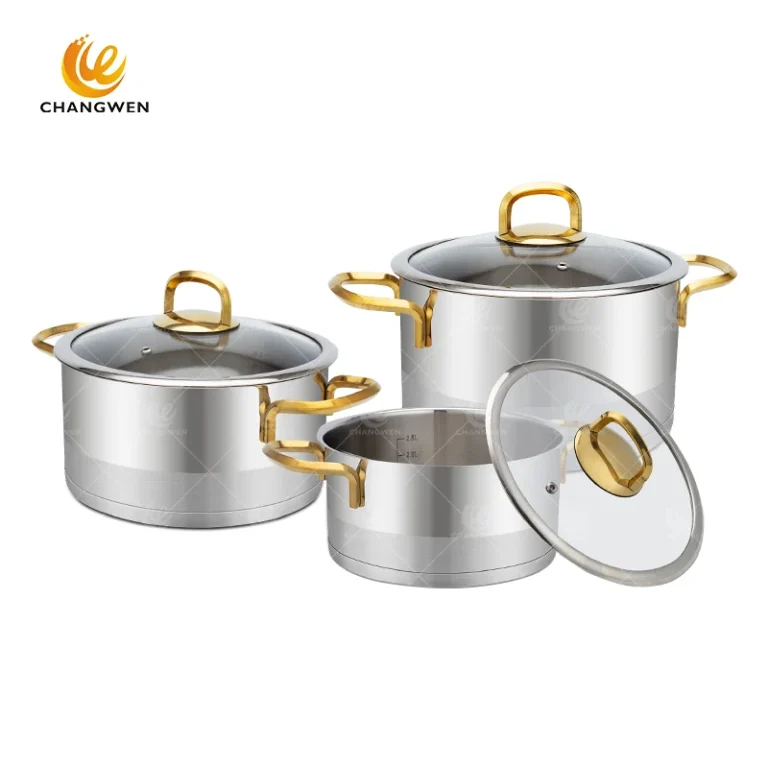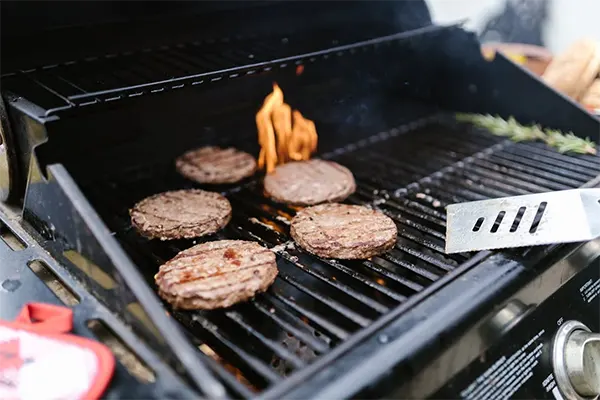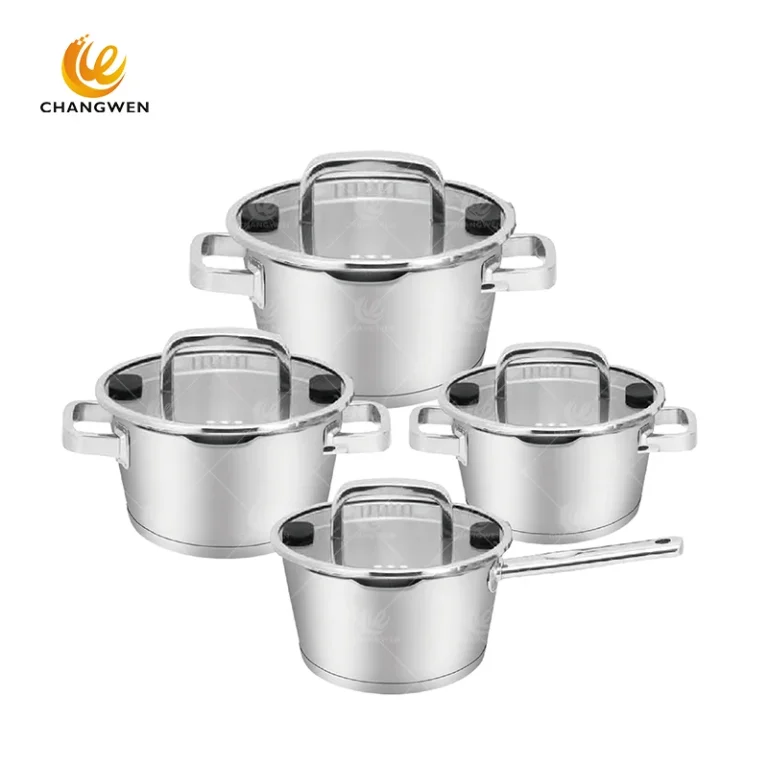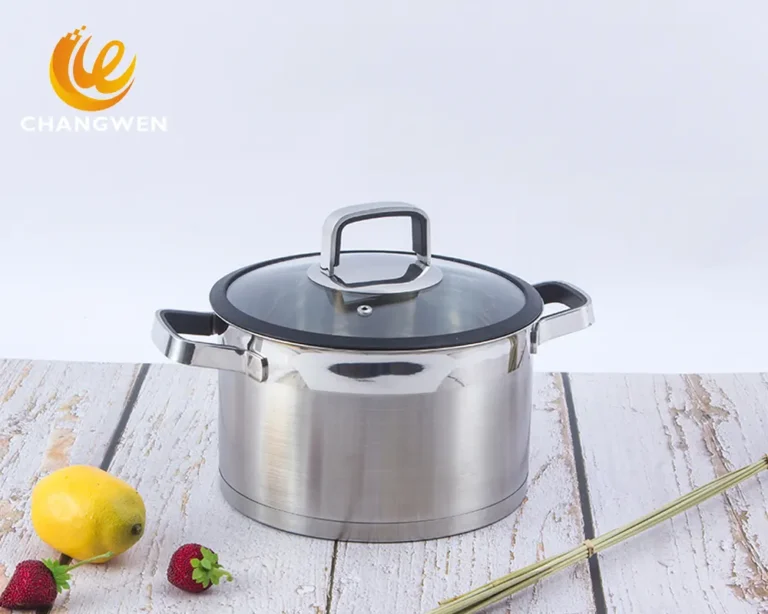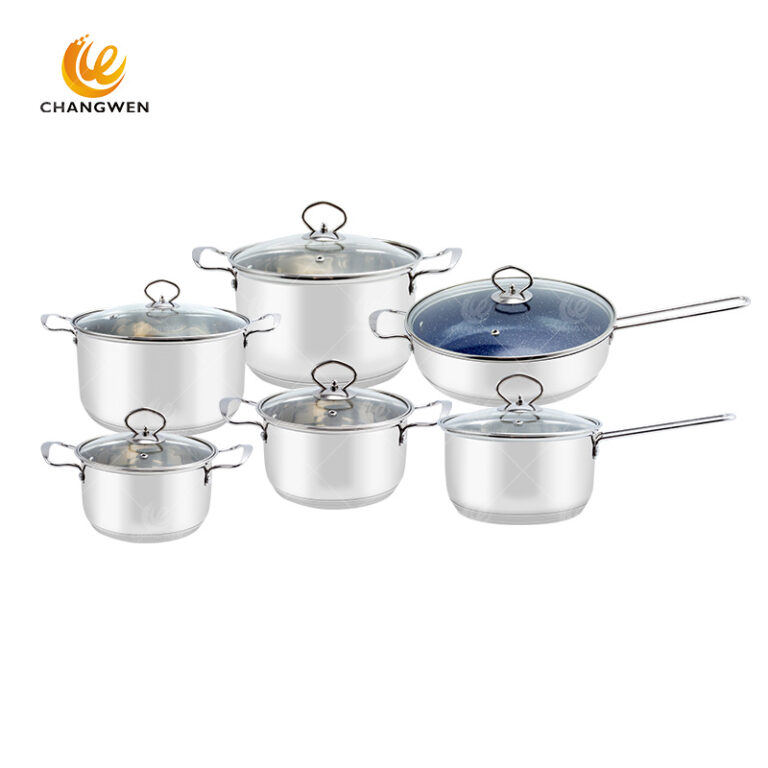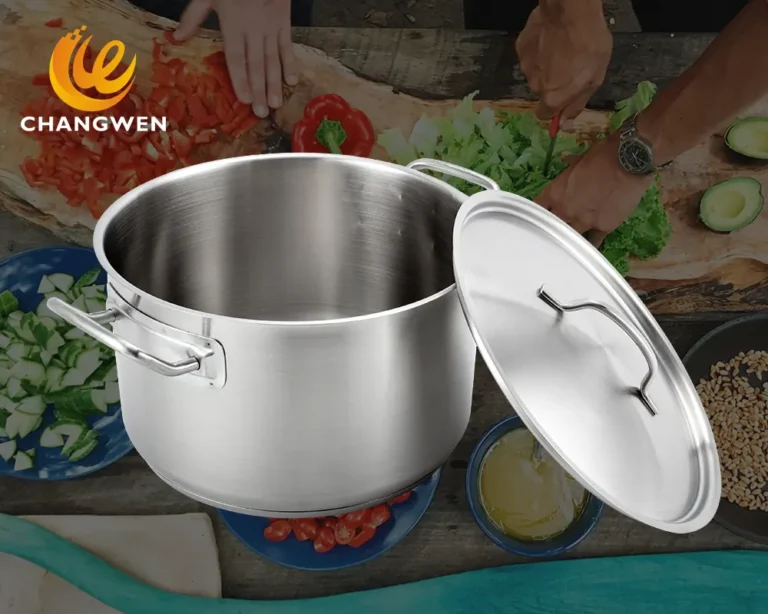What are the best materials for stainless steel cookware?
The best material for stainless steel cookware is 304 or 316. Kitchenware also uses 430 or 201.
1. 304 stainless steel
The ingredients contained in 304 stainless steel are very consistent with human health needs, and have excellent corrosion resistance and high temperature resistance. At the same time, it will not produce any harmful substances to food. It is the best choice for stainless steel cookware. But the price is relatively high.
2. 316 stainless steel
316 stainless steel is the material of high-end stainless steel cookware. It contains more molybdenum and nickel in its composition, has better corrosion resistance and corrosion resistance, and the price is higher than 304.
3. 430 stainless steel
430 stainless steel is mainly composed of chromium and iron, with a high cost performance, but relatively poor corrosion resistance, and poor heat conduction performance, uneven heating. Therefore, it is generally not recommended.
4.201 stainless steel
201 stainless steel is a stainless steel material with high strength, corrosion resistance, high temperature resistance, wear resistance and other properties. However, 201 stainless steel is not food-grade stainless steel and cannot be directly used in the production of food materials. After long-term use, elements such as chromium and nickel in stainless steel will gradually dissolve, affecting food safety.
Which is better, a 3-layer or 5-layer stainless steel cookware?
The three-layer steel pot is a configuration of food-grade steel + aluminum alloy + magnetic steel.
The five-layer steel is a configuration of food-grade steel + aluminum + copper + aluminum + magnetic steel.
The more layers there are, the gaps between the layers will affect the thermal conductivity, but the middle layer has a high and uniform thermal conductive material of aluminum or magnesium, which can improve the thermal uniformity of the stainless steel pot and avoid local overheating and causing the pot to stick. The more layers there are, the better the smoke-free effect is, and the relatively slower heating speed. The cost of 5 layers is higher than that of 3 layers. Choose 5 layers or 3 layers according to cooking needs. The quality of frying and grilling dishes with 5 layers will be better.
Commonly Used 10 Piece And 12 Piece Pots And Pans Cookware Set
10-Piece Pots and Pans Cookware Set
Included in the Set: 8.5 and 10.5 inch skillets, 1.5 quart and 3.5 quart sauce pans with lids, 3 quart saute pan with lid, and 6 quart stock pot with lid.
12-Piece Pots and Pans Cookware Set
Included in the set: 1 1/2- and 3-quart saucepans with lids, 8-quart stockpot with lid, 3.5-quart sauté pan with lid, 8- and 10-inch skillets, steamer insert with lid.
Choosing the Perfect Cookware Set
Size and Weight
Assess Kitchen Storage: Before purchasing, consider your kitchen storage space. Measure cabinet dimensions to ensure the cookware can be conveniently stored without overcrowding or damaging other items.
Cooktop Compatibility: Match the size of the pots and pans to the size of your cooktop burners. Using cookware that’s too large or too small for a burner can lead to uneven heating and potential safety hazards.
Portability: Consider how often you’ll need to move pots and pans between the stovetop, oven, and table. Lightweight cookware is easier to handle, especially for tasks like draining water or transferring dishes.
Nested Sets: Look for cookware sets designed to nest within each other. This can save valuable storage space in your kitchen.
Heat Resistance
Oven-Safe Temperatures: Check the maximum oven-safe temperature for each cookware set. If you plan to use pots and pans in the oven regularly, look for sets that can withstand high temperatures without damage.
Handle Materials: Handles made from materials like silicone or those with a heat-resistant coating can stay cooler on the stove and are safer to handle without oven mitts. Metal handles often conduct heat, making them hot to the touch when used on the stove or in the oven.
Lid Construction: The material and construction of lids are also essential for heat resistance. Glass lids often have a lower oven-safe temperature compared to metal lids.
Versatility Across Cooking Methods: If your cooking involves a variety of heat sources (e.g., stovetop to oven), select a cookware set that’s explicitly rated for such versatility.
Practical Considerations.



